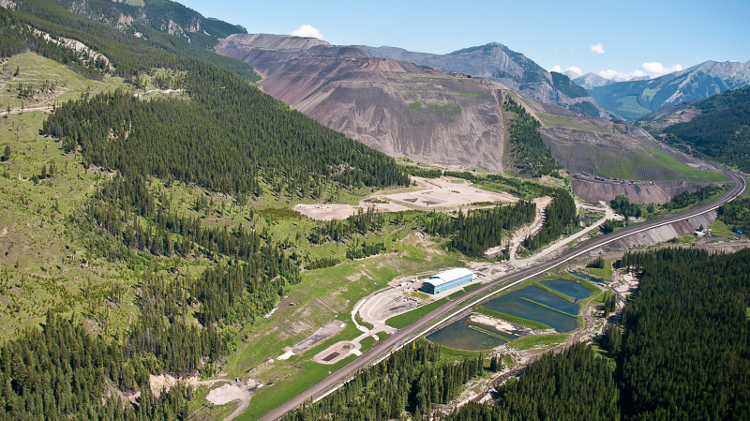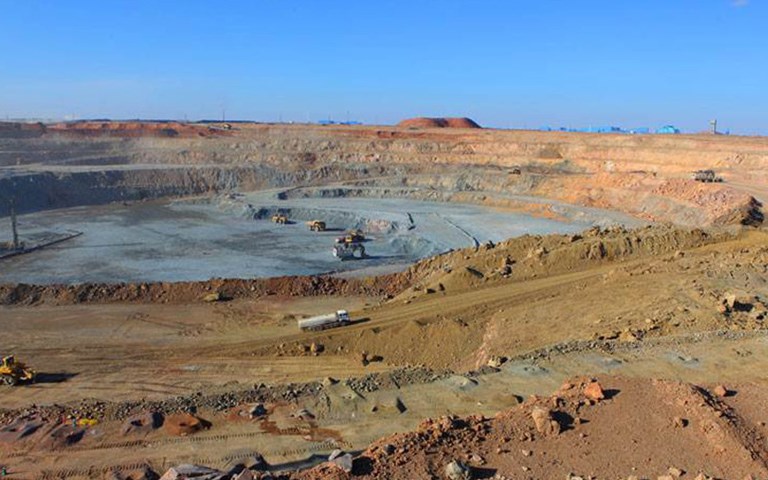Copper-producing companies are feeling bullish about the metal’s long-term prospects, including Rio Tinto, whose massive Oyu Tolgoi underground copper mine will deliver its first production in 2020 | Courtesy of Rio Tinto
Diving oil and commodities prices and political curveballs made 2016 a challenging year for the mining industry. However, many commodities are starting this year with upward momentum, according to market analysts.
The first commodity price forecasts of the new year have been released; Scotiabank published its tables on Jan. 17, featuring higher average yearly prices for zinc, copper and nickel, and the World Bank released its first forecast on Jan. 24.
The commodities market as a whole has improved substantially since early last year, when oil had hit a low point. “I think that you definitely saw some very dour investment and market sentiment towards the entire commodity space,” said Scotiabank commodities economist Rory Johnston, “and oil very much drives the commodity sentiment.”
But fundamentals specific to each commodity are more likely to drive prices for the next year and allow specific metals to pull away from oil prices, Johnston said. Copper had a surprise run-up in the fall, increasing 20 per cent and leading Goldman Sachs to forecast that the price per tonne will hit $6,200 within six months. (Previous forecasts had the six-month price hovering around $4,800.) “I don’t know if it will be the best-performing commodity of 2017,” Johnston said, “but it’s definitely going to outperform our previous expectations.”
Companies within the industry are also feeling bullish about copper’s long-term prospects. “Rio Tinto is well placed to benefit from copper’s attractive long-term fundamentals, and global demand for copper remains strong,” Rio Tinto’s chief executive of copper & diamonds, Arnaud Soirat, told CIM Magazine.
Three things driving the demand, Soirat said, are urbanization, industrialization and the increased use of copper required to address climate change. “Just imagine when one day we will all be driving electric cars,” he said. Those cars will need copper from somewhere, and although existing mines are aging and grades are degrading, there has not yet been enough investment to head off the supply shortfall. “This is good news for us, as our underground project at Oyu Tolgoi will be delivering first production into this deficit market in 2020,” Soirat said.
While Rio Tinto is looking to new copper supply coming online, Glencore’s late-2015 decision to strategically idle mines is contributed to zinc’s recent price bump, according to Scotiabank. About 500,000 fewer tonnes of zinc concentrate is on the market in 2017 because of Glencore’s call. The company declined to comment, but other companies are confident about zinc’s prospects. “The zinc metal market has been in deficit for a few years already, but prices have been slow to respond due to large inventories which have been drawn down and are now approaching a critical level,” said Teck Resources spokesperson Chris Stannell. Zinc prices did begin to turn around after bottoming out early last year.
“Zinc is the one that we had pegged as the best performer for the year,” said Johnston.
Nickel is also expected to have an interesting year. “The reason that nickel is one you have to keep a close watch on as well is because most of the supply reduction and supply concern we’re seeing right now stems not from organic mine closures but from direct government policy,” Johnston said.
The Philippine government rattled the market when it suspended eight nickel mines and clouded the future of many more in a crackdown on environmental practices. In 2015 the country produced more than twice as much of the metal as its closest competitor. Johnston notes that the Philippines’ decision to crack down with environmental policy was more likely to impact mines that were not yet in production. One such project, Intex Resources’ US$2.5 billion nickel project, had its environmental permit revoked in January.
Alternately, the Indonesian government eased supply pressure with its early 2017 decision to soften its earlier ban on exporting nickel ore.
There are plenty of political events on 2017’s horizon that could make the market shift, including any unexpected electoral victories in France and the Netherlands. “They may not have a direct effect on base metals markets in terms of demand, but the way they turn out either on or against expectations will have an effect on investor risk aversion to the market,” Johnston said. “We definitely do see a very uncertain policy outlook globally. There are a lot of moving parts, there are a lot of elections and referenda coming up that could have the potential to derail the growth outlook we have.”
Even a small shift in Chinese demand for base metals could impact the fundamentals. Nearly half of the global demand for copper, nickel and zinc came from China last year. A two per cent decrease in Chinese demand would dramatically change the market, he said, while a large North American infrastructure spending plan would likely move markets merely through better investor sentiment.
“I think one of the big surprises of this last year was how aggressive Chinese stimulus policy was,” Johnston said. “I think that’s always a little bit of a black box.
“We can speculate on what Beijing is going to do, but at the end of the day they’re the ones that know.”




